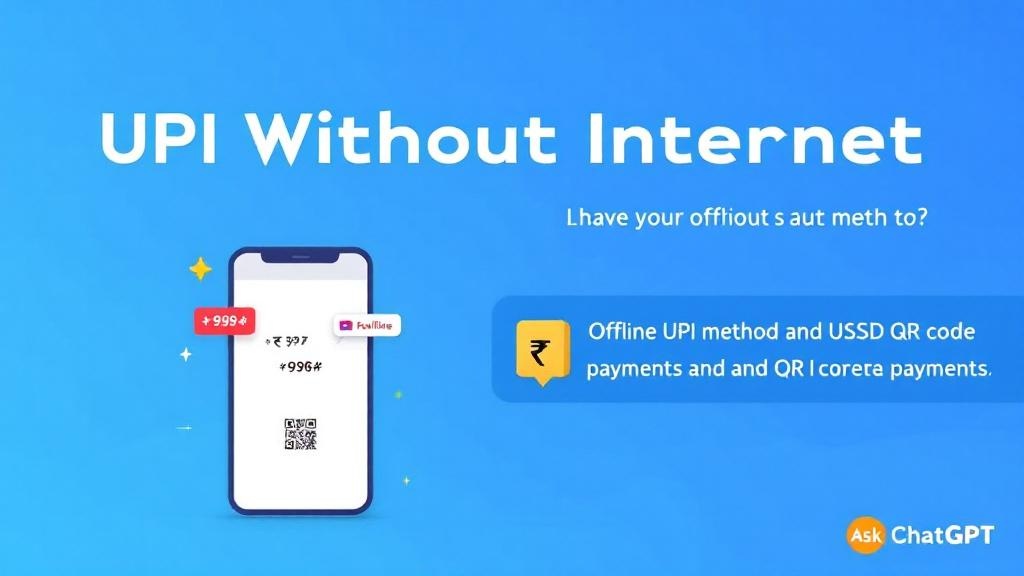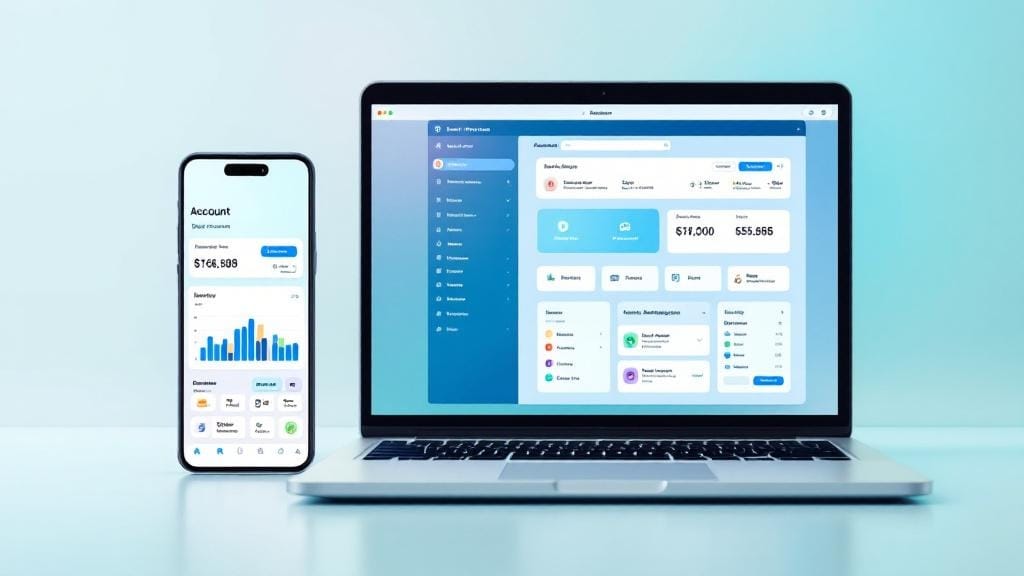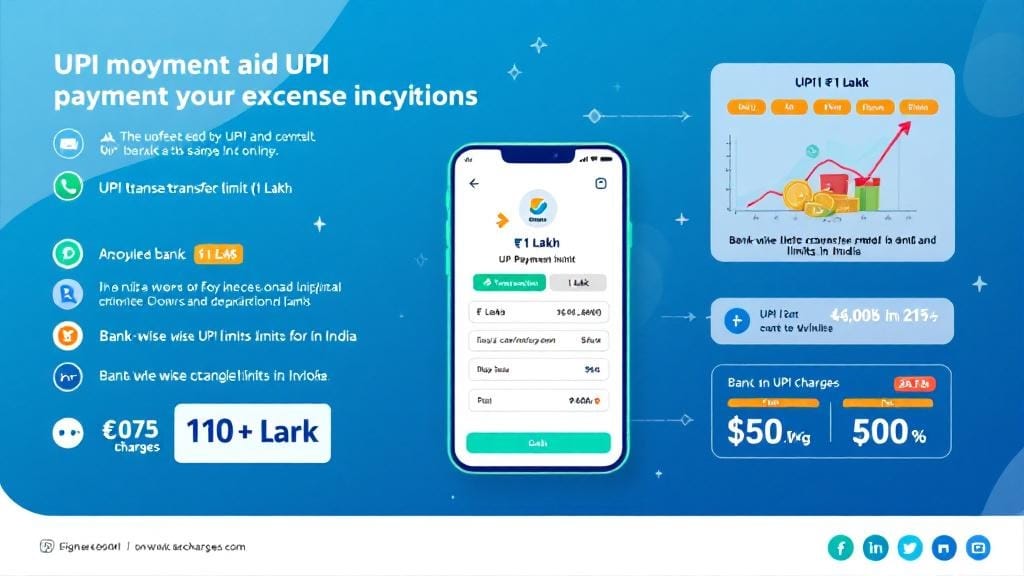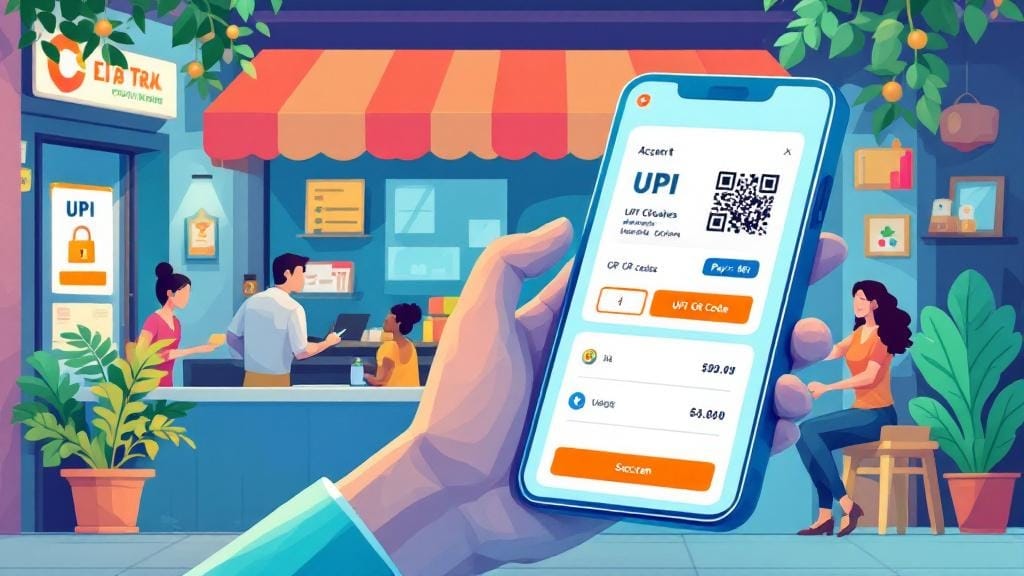Unified Payments Interface (UPI) has transformed the way we send and receive money. With its fast, secure, and user-friendly features, UPI has become a staple in the daily transactions of millions of people across India. However, a common question that arises is whether it’s possible to use UPI without internet access. Can you make UPI payments when you’re not connected to Wi-Fi or mobile data?
In this article, we’ll answer that question by diving into various offline UPI payment methods, exploring how you can send money without an internet connection, and explaining how UPI facilitates financial inclusion in rural areas.
What Is UPI and How Does It Work?
Before we delve into offline UPI methods, let’s quickly recap what UPI is and how it works.
UPI is a real-time payment system developed by the National Payments Corporation of India (NPCI). It allows users to link multiple bank accounts to a single mobile app and make instant fund transfers, bill payments, and online shopping with a few taps. UPI has gained significant popularity due to its ease of use, security features, and low transaction fees.
But What About UPI Without Internet?
While UPI is primarily designed for online transactions, there are methods to use it offline. These methods come in handy when you’re in areas with no mobile network or low bandwidth. UPI offers solutions that allow users to make transactions without needing an internet connection. Let’s explore some of these options.
Offline UPI Payment Methods
1. *USSD Code for UPI – 99# UPI Code
One of the easiest ways to make UPI payments without an internet connection is through the *99# USSD code. This service allows you to perform UPI transactions through a basic mobile phone that doesn’t require an internet connection.
*How to Use 99# for UPI Payments:
*Dial 99# from your mobile phone.
Choose your language.
Select the option for UPI transactions.
Enter your UPI PIN to authorize the transaction.
This method can be used to transfer funds, check your balance, and even send money to people without smartphones. It’s a game-changer for financial inclusion, particularly for those in rural areas with limited internet access.
2. Aadhaar-Enabled Payments System (AEPS)
Aadhaar-enabled payments also allow UPI-like transactions without needing an internet connection. By linking your Aadhaar number to your bank account, you can perform transactions using biometric authentication. This method is available at micro-ATMs or Aadhaar-enabled devices, which are commonly found in rural and remote areas.
How to Use AEPS for UPI Payments:
Go to an AEPS-enabled kiosk.
Provide your Aadhaar number and biometric fingerprint for authentication.
Complete the transaction.
This is a secure, fast, and offline way to make UPI-like transactions without the need for mobile data or Wi-Fi.
3. Mobile Banking Without Internet (SMS Banking)
Several banks offer SMS banking services, allowing users to carry out basic banking tasks, including money transfers, using SMS. Although not strictly UPI, this is an alternative for transferring money without internet access.
How to Use SMS Banking for Transfers:
Register for SMS banking with your bank.
Send a predefined message (e.g., “TRANSFER <amount> <recipient number>”) to the bank’s SMS code.
Receive a confirmation code and complete the transfer.
4. Offline Money Transfer via USSD and IMPS
If you’re looking for a way to send money without internet, you can also use IMPS (Immediate Payment Service) via USSD codes, which work similarly to the *99# UPI method. Banks like State Bank of India (SBI) and ICICI offer services that allow you to transfer funds without using data.
How to Use IMPS via USSD for UPI Payments:
Dial the bank’s USSD code (e.g., for SBI, it’s *99#).
Choose IMPS as your transfer option.
Enter the recipient’s details and transaction amount.
Authenticate the payment with your UPI PIN.
These USSD-based methods ensure that even without internet access, you can make UPI-like transactions on your phone.
The Role of UPI in Rural Digital Banking
India’s rural regions have been historically underserved when it comes to digital banking. The lack of infrastructure, low internet penetration, and reliance on cash have all contributed to financial exclusion. However, UPI’s offline payment options have changed this dynamic.
By enabling low-bandwidth payment options such as *99# UPI, Aadhaar-enabled payments, and SMS banking, UPI has brought financial services closer to the rural population. These innovations are making it easier for people in remote areas to transfer money, pay bills, and receive government benefits.
Benefits of UPI Without Internet for Rural India
Access to Financial Services: With offline payment options, more people in rural areas can engage with the financial system.
Instant Fund Transfer: Even without internet, transactions are processed immediately, providing users with real-time money transfers.
Reduced Dependency on Cash: UPI offers a way to transition away from cash-based transactions, making it safer and more efficient.
Secure Digital Payments Without Data
UPI’s offline options are not only convenient, but they also ensure that your digital payments are secure. Each transaction, whether online or offline, is protected with a PIN, ensuring that unauthorized access is prevented.
Moreover, since UPI leverages the security features of Aadhaar, USSD, and other payment gateways, it ensures data integrity and encryption, even in low-bandwidth conditions. So, you can make UPI payments without data knowing that your transactions are safe.
How to Make UPI Payments Without Internet on a Smartphone
While we’ve covered methods for feature phones, let’s now focus on smartphones. Even though most UPI apps require internet access, there are still ways to make payments in offline scenarios.
1. Using USSD Codes on Smartphones
Just like feature phones, smartphones can also use the *99# USSD code to initiate UPI transactions. You don’t need an internet connection to dial *99# and complete a transfer.
2. Offline UPI Payments Through QR Codes
In certain cases, QR codes can also be scanned offline. If the merchant or recipient has an offline QR code generator, you can scan the code and make a payment. However, this might still require intermittent connectivity.
FAQs About UPI Without Internet
1. Can I send money through UPI without data?
Yes, you can send money without internet using the *99# USSD code or Aadhaar-enabled payment systems.
2. *What is the 99# UPI code, and how does it work?
*99# is a USSD service that allows you to make UPI payments, check balances, and transfer funds without requiring an internet connection. Dial *99# on your mobile and follow the prompts.
3. How can I use UPI without a smartphone?
You can use UPI without a smartphone by dialing *99# from any basic phone. This method allows you to transfer funds and check balances using USSD.
4. Are UPI transactions secure without internet?
Yes, UPI transactions are secured using your UPI PIN and encryption, even when performed offline using USSD or Aadhaar authentication.
5. Can I use UPI for offline payments in rural areas?
Yes, UPI’s offline methods, including USSD codes and Aadhaar-enabled payments, are specifically designed to support users in rural and remote areas without internet access.
6. Is it possible to make a UPI payment in areas with low bandwidth?
Yes, UPI’s offline options like *99# and AEPS can work in areas with limited or no internet connectivity, ensuring instant payments even on low-bandwidth networks.
Conclusion: A Convenient and Secure Way to Use UPI Without Internet
UPI’s offline payment solutions have made financial services more accessible to millions of people, especially those in rural areas. Whether you’re using *99# UPI, SMS banking, or AEPS, you can rest assured that your transactions are safe, secure, and efficient.
With India’s digital landscape evolving rapidly, UPI continues to break barriers, allowing individuals to make instant fund transfers even without an internet connection. So, the next time you find yourself without data, remember that UPI has got you covered—offline.








Comments (0)